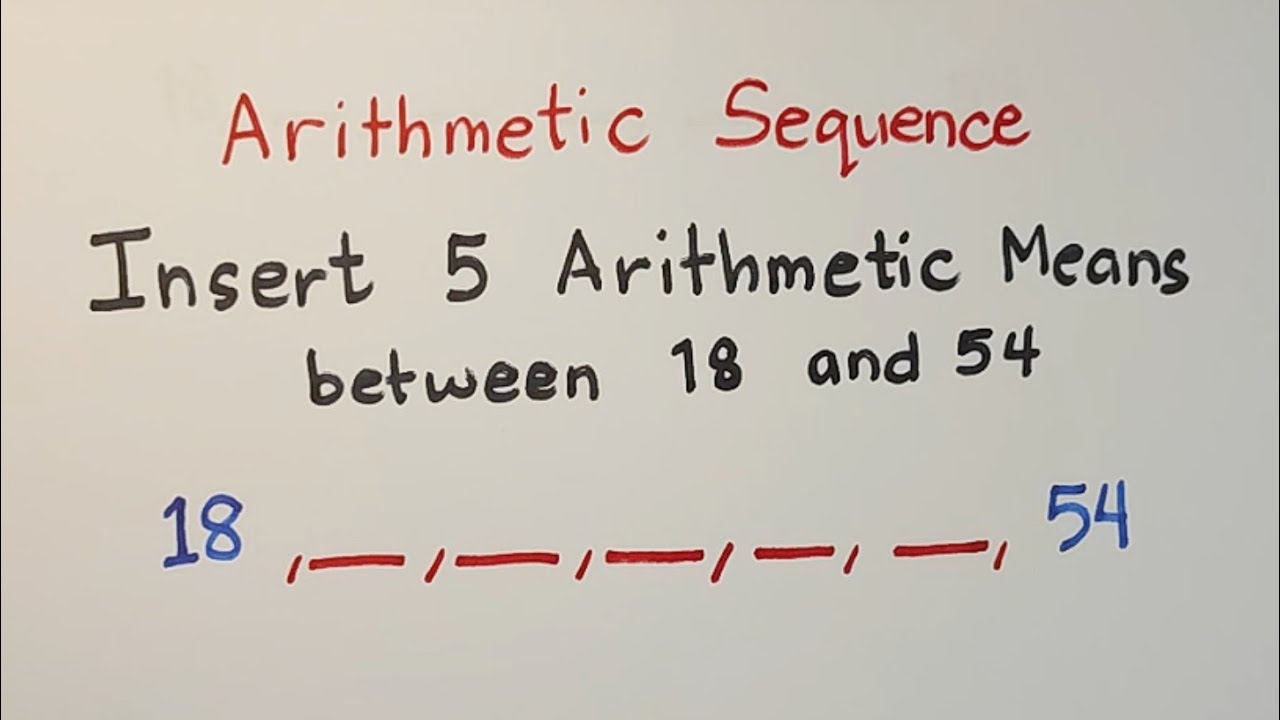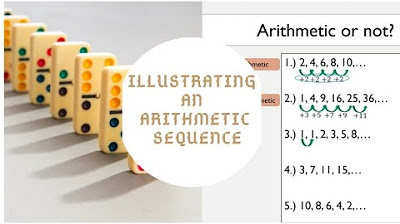Arithmetic Progression Class 10
Summary
TLDRThis educational video delves into the concept of arithmetic progression (AP), illustrating its definition through a sequence with a common difference of 3. It explains the formula for finding the nth term of an AP and applies it to various examples, including finding specific terms and proving sequences as APs. The script also covers special cases like constant sequences and negative differences, and offers strategies for solving complex problems involving APs, such as finding terms from the end and using the sum and product of terms. The video aims to make arithmetic progression easy to understand and encourages practice for mastery.
Takeaways
- 📚 The sequence 1, 4, 7, 10, 13, 16, 19 is an example of an arithmetic progression (AP) because the difference between consecutive terms is constant (3 in this case).
- 🔢 The general formula for finding the nth term in an arithmetic progression is \( T_n = a + (n - 1) \times d \), where \( a \) is the first term and \( d \) is the common difference.
- 📉 An arithmetic progression can also be decreasing, such as the sequence 5, 4, 3, 2, 1, where the common difference is -1.
- 🔄 A sequence where all terms are the same, like 3, 3, 3, ..., is also considered an arithmetic progression with a common difference of 0.
- 📝 To prove a sequence is an AP, one must show that the difference between any two consecutive terms is constant.
- 📈 The nth term formula can be used to predict terms in an AP, as demonstrated by finding the sixth term of the sequence 1, 4, 7, 10, 13, 16, 19.
- 🔑 The key to solving problems involving APs is to use the formula for the nth term and the concept that the common difference is constant between consecutive terms.
- 🧩 When dealing with problems that involve finding terms in an AP, it's helpful to set up equations based on the given conditions and solve for the unknowns.
- 📌 Remember that the formula for the nth term from the end of an AP is \( L - (n - 1) \times d \), where \( L \) is the last term.
- 📉 When calculating the number of multiples of a number within a range, such as multiples of 4 between 10 and 250, an AP approach can be used to find the count.
- 📝 For solving problems with a given number of terms in an AP, it's often more convenient to use terms like \( a - d, a, a + d \) for three terms, and \( a - 3d, a - d, a + d, a + 3d \) for four terms, to simplify calculations.
Q & A
What is an arithmetic progression (AP)?
-An arithmetic progression is a sequence of numbers in which the difference between consecutive terms is constant. This constant difference is denoted by 'D'.
How is the nth term of an arithmetic progression calculated?
-The nth term (T_n) of an arithmetic progression can be calculated using the formula: T_n = a + (n - 1) * D, where 'a' is the first term and 'D' is the common difference.
What is the difference between an arithmetic progression that is increasing and one that is decreasing?
-An increasing arithmetic progression has a positive common difference, meaning each term is larger than the previous one. A decreasing arithmetic progression has a negative common difference, indicating each term is smaller than the previous one.
Can an arithmetic progression have a common difference of zero?
-Yes, an arithmetic progression can have a common difference of zero. In such a case, all terms in the sequence are the same, as there is no change between consecutive terms.
What is the formula for finding the nth term from the end of an arithmetic progression?
-The formula for finding the nth term from the end of an arithmetic progression is: T_n = L - (n - 1) * D, where 'L' is the last term and 'D' is the common difference.
How can you determine if a sequence is an arithmetic progression without using the formula?
-You can determine if a sequence is an arithmetic progression by checking if the difference between any two consecutive terms is constant throughout the sequence.
What is the sum of the first three terms of an arithmetic progression if the common difference is 2 and the first term is 3?
-If the first term (a) is 3 and the common difference (D) is 2, the sum of the first three terms is 3 + (3 + 2) + (3 + 2*2) = 3 + 5 + 7 = 15.
How many multiples of 4 are there between 10 and 250?
-There are 60 multiples of 4 between 10 and 250. This is calculated by considering the sequence of multiples of 4 as an arithmetic progression with a first term of 12 and a common difference of 4, and solving for the number of terms (n) using the formula T_n = a + (n - 1) * D.
What is the trick to solving for the terms of an arithmetic progression when given three terms and certain conditions?
-The trick is to express the three terms as a - D, a, and a + D, which simplifies the process of solving for the common difference (D) and the first term (a) when given certain conditions.
How do you find the middle term of an arithmetic progression with a known first term, common difference, and last term?
-To find the middle term of an arithmetic progression, first determine the total number of terms (n) using the formula for the last term (T_n = a + (n - 1) * D). The middle term is then T_(n/2), which can be calculated using the formula for the nth term with the appropriate value of n.
Outlines

This section is available to paid users only. Please upgrade to access this part.
Upgrade NowMindmap

This section is available to paid users only. Please upgrade to access this part.
Upgrade NowKeywords

This section is available to paid users only. Please upgrade to access this part.
Upgrade NowHighlights

This section is available to paid users only. Please upgrade to access this part.
Upgrade NowTranscripts

This section is available to paid users only. Please upgrade to access this part.
Upgrade NowBrowse More Related Video

Harmonic Sequence

ARITHMETIC SEQUENCE AND NTH TERM OF ARITHMETIC SEQUENCE || GRADE 10 MATHEMATICS Q1

Matematika SMA - Barisan dan Deret (1) - Barisan Aritmatika, Rumus Barisan Aritmatika (A)

SEQUÊNCIAS NUMÉRICAS | QUER QUE DESENHE | MAPA MENTAL

Finding the Arithmetic Means - Arithmetic Sequence Grade 10 Math

Illustrating an Arithmetic Sequence | Grade 10 Math
5.0 / 5 (0 votes)